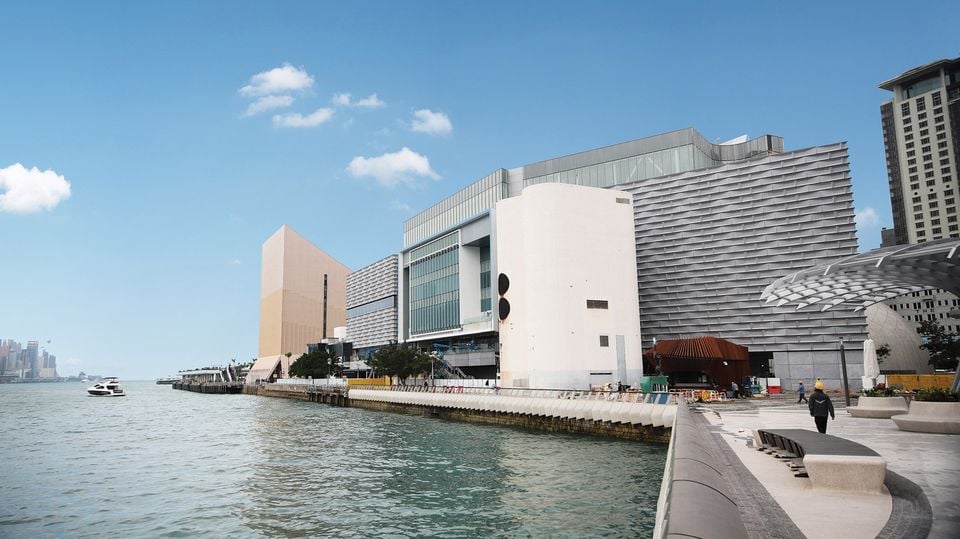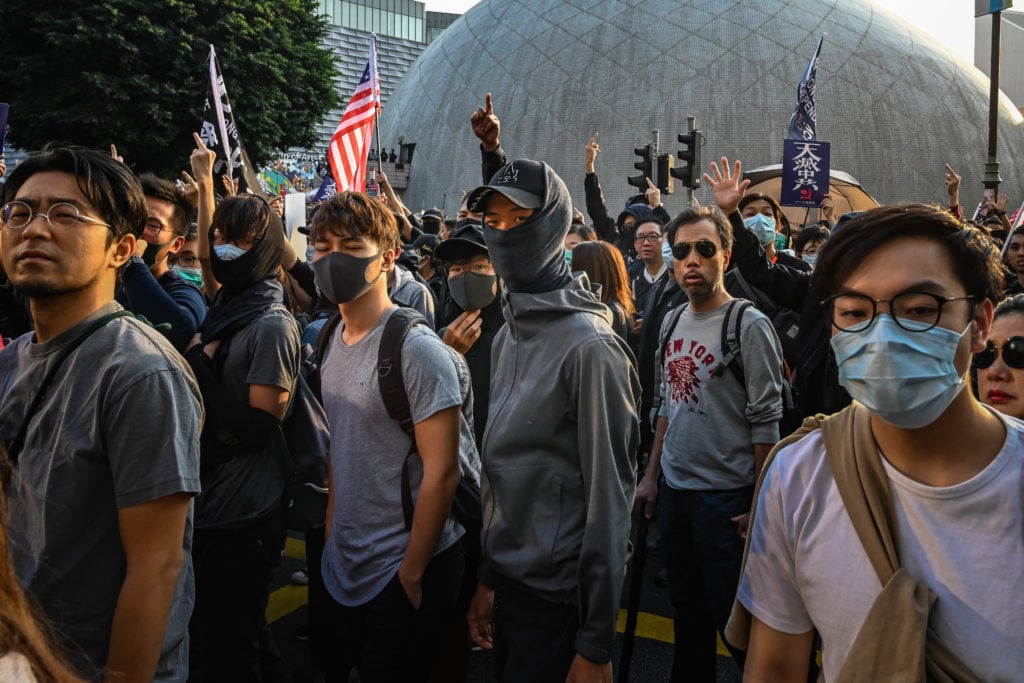Politics
As Police Tear-Gassed Protesters Outside Its Doors, the Hong Kong Museum of Art Was Forced to Shut Down Its Grand Reopening
The museum is the latest among a string of art institutions to close during the unrest.

The museum is the latest among a string of art institutions to close during the unrest.

Sarah Cascone

As the protests rage on in Hong Kong, police used teargas on demonstrators gathered outside of the Hong Kong Museum of Art yesterday. The clash between law enforcement and protesters look place just one day after the museum’s reopening following a four-year HK$934 million ($119 million) expansion project.
The rally in the city’s Tsim Sha Tsui district had been approved ahead of time by the police, and drew tens of thousands of peaceful protesters, according to the Art Newspaper. But just an hour into what was supposed to be a three-hour demonstration, police began firing teargas into the crowds and announced that anyone who refused to disperse could be arrested for “illegal assembly.”
Ahead of the clash between the police and the protesters, which included children and the elderly, the government-run museum posted a notice that it would be closing early. It is unclear whether the institution may have allowed people fleeing the teargas to seek shelter inside.
The Anti-Extradition Law Amendment Bill movement has a list of five demands, chief among them the withdrawal of legislation allowing China to extradite fugitives. As protests escalate, the situation potentially threatens both visitors to the museum and its artworks.

The Hong Kong Museum of Art reopened on November 30 after a four-year expansion project. Photo courtesy of the Hong Kong Museum of Art.
The inaugural exhibitions include “A Sense of Place: From Turner to Hockney,” which features loans of some 70 works from London’s Tate Modern. Hong Kong artists were also invited to respond to three centuries of British landscape painting, including works by J.M.W. Turner and David Hockney.
“We have and will continue to closely monitor the situation in Hong Kong in dialogue with colleagues at the Hong Kong Museum of Art to ensure the safety of staff and the collection,” Cecily Carbone, the Tate’s press officer, told Artnet News in an email ahead of the exhibition’s opening. Judith Nesbitt, the director of national and international partnerships at Tate, and exhibition curator Anne Lyles were both on the ground in Hong Kong for the opening.
Other institutions that have been affected by the ongoing unrest include the Hong Kong Museum of History, which has suspended its current exhibition “Glistening Treasures in the Dust – Ancient Artefacts of Afghanistan.” The museum is located across the street from Hong Kong Polytechnic University, where a police siege began on November 17, and saw protesters set fire to the campus.

Thousands of pro-democracy protesters participate in a “5 Demands” mass rally on December 1, 2019, in Hong Kong. Photo by Billy H.C. Kwok/Getty Images.
Lévy Gorvy’s new Hong Kong gallery, which opened earlier this year, has postponed its exhibition of Chinese artist Tu Hongtao, originally set to open November 22. A representative of the gallery told Artnet News that the space is currently closed to the public, but open for private viewings.
Also in limbo is Hauser & Wirth’s planned Hong Kong outing of photographer Annie Leibovitz, according to the Financial Times. The organizers of Art Basel Hong Kong have denied rumors that the annual art fair is considering relocating its 2020 fair, which is scheduled to open in Hong Kong on March 19.